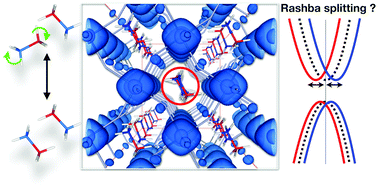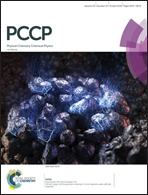Does Rashba splitting in CH3NH3PbBr3 arise from 2 × 2 surface reconstruction?†
Abstract
As a result of early theoretical predictions, evidence for the Rashba or Dresselhaus effect in hybrid perovskites has recently attracted several experimental investigations, motivated by possible applications in spin-orbitronics. For instance, a large Rashba splitting has recently been reported for the (001) surface of CH3NH3PbBr3. This effect is forbidden in the bulk material since both low-temperature and room-temperature crystal structures present inversion symmetry. Here we investigate the effects of two (001) nanoscale surface reconstructions of CH3NH3PbBr3 using first-principles approaches based on density functional theory (DFT). The two experimental reconstructions are related to different orientations of MA cations at the surface, defining zigzag and dimer phases. The impact of these structural transformations on their electronic structures is thoroughly investigated. Whereas calculations reveal the occurrence of surface-induced Rashba effect, its amplitude is considerably smaller than the experimentally reported value, in agreement with other experimental investigations and leading to the conclusion that mesoscale surface polar domains and/or surface defects may result from sample preparation.



 Please wait while we load your content...
Please wait while we load your content...